On the surface, the iPhone 14 seems like a very small upgrade. But a redesigned interior makes it easier and cheaper to repair, marking a major shift in the right direction for Apple.
Weak exchange rates against the dollar mean the new iPhone is £70 (A$50) more expensive than its predecessor, priced at £849 (A$1,399) despite costing the same $799 in the US. Unfortunately, it’s a familiar story for all of Apple’s current products and probably others coming this year.
On the outside, the iPhone 14 is basically the same as its predecessor with a standard 6.1-inch 60Hz OLED display, aluminum sides, and a glass back. It even has the same A15 chip that was used in last year’s 13 Pro models and the same long-lasting battery of about 44 to 48 hours between charges. Use it sparingly and you’ll get about two days between charges.
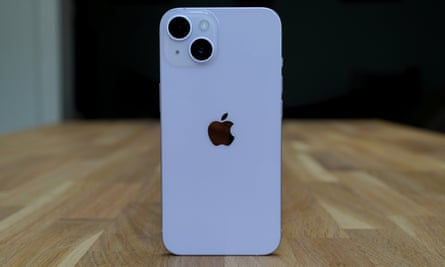
The biggest changes are hidden in plain sight. Previously, the rear glass panel was essentially glued to the frame, making replacing it when it broke a painstaking process that required complete disassembly of the device from the front. Now the iPhone 14 has a new mid-frame design that allows it to be open front and back. It’s not exactly the user-repairable modular dream demonstrated by Fairphone, but it’s a big step in the right direction for Apple.
For the user, that means better heat dissipation so you can game longer. But for repairs, it means you can replace the back glass just as easily as the screen, which is a significant improvement to the longevity of the device. The result is that rear glass repairs cost £169, down from Apple’s £300+. Third parties are likely to charge less again.
Like the iPhone 14 Pro, the new phone ships without a SIM card tray in the US. entirely in digital eSimsbut it still has the SIM tray outside of the US, including the UK. SOS emergency satellite It will launch in November, but only for phones sold in the US or Canada.
Specifications
-
Screen: 6.1-inch Super Retina XDR (OLED) (460 ppi)
-
Processor: Apple A15 Bionic
-
RAM: 6GB
-
Storage: 128, 256 or 512GB
-
OS: iOS 16
-
Camera: 12MP dual rear with OIS, 12MP front camera
-
Connectivity: 5G, Wi-Fi 6, NFC, Bluetooth 5.3, Lightning, UWB and GNSS
-
Waterproof: IP68 (6 meters for 30 minutes)
-
Dimensions: 146.7×71.5×7.8mm
-
Weight: 172g
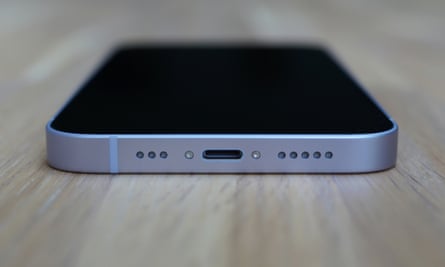
Sustainability
Apple does not provide an expected life for the battery, but it should last more than 500 full charge cycles with at least 80% of its original capacity and can be replaced for £105. out of warranty screen repairs cost £289while rear glass repairs cost £169. Repair specialists iFixit awarded the phone seven out of 10 for repairability, praising the new internal design.
14 contains recycled gold, plastic, rare earth elements, tin, and tungsten. The company breaks down the environmental impact of the phone in your report. Apple offers free trade-in and recycling schemes, even for non-Apple products.
iOS 16
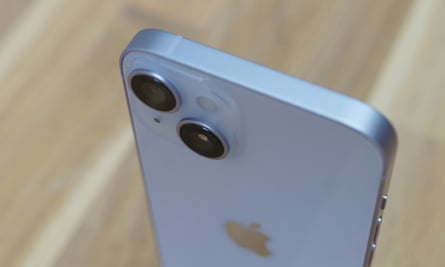
The 14 comes with iOS 16, which is a funnier version of Apple’s software and has a revamped lock screen among many other new features. You can expect at least five years of software and security updates and potentially up to seven.
New for the iPhone 14 line is car crash detection, which detects the high-impact force of a traffic collision and automatically calls emergency services if you don’t respond within 20 seconds.
Camera
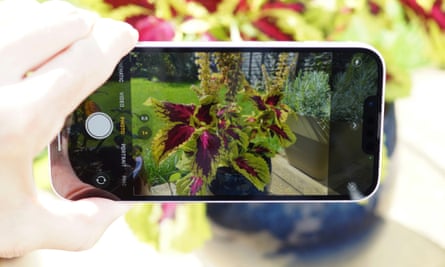
The 14 has the same familiar dual-camera setup on the back without optical zoom, as on previous non-Pro iPhones. But the main 12MP camera sensor is physically larger than its predecessor, increasing the low-light performance by up to 49%. Shots taken in medium to low light conditions, such as indoors, are significantly sharper than before, and the dedicated night mode is required less frequently.
The ultra-wide camera has better low-light performance thanks to improved software processing, but otherwise remains unchanged. The two combined are good cameras, but the lack of an optical zoom is disappointing compared to its rivals.
The selfie camera has been improved for the first time in years on iPhone, now with twice the good low-light performance, autofocus, and a sharper lens. Images are sharper with better detail, especially in low-light or unstable conditions, as is the case with most selfies.
Video capture continues to be class leading. A new action mode stabilization system works great in bright light, but struggles with everything else.
Overall, the 14’s cameras are good, but they lack range for the price.
Price
The iPhone 14 costs from £849 ($799/AU$1,399) with 128 GB of storage.
For comparison, the iPhone 14 Plus costs £949does the iPhone 14 Pro cost £1,099the Samsung Galaxy S22+ costs £949the Galaxy Z Flip 4 costs £999 and the costs of Google Pixel 6 £599.
Verdict
At first glance, the iPhone 14 is basically an iPhone 13 with slightly improved cameras. It has the same screen, chips, long battery life, and design. But it hides a shift change for Apple with reconfigured guts that make it easier to fix and for less. It’s a definite improvement for longevity, even if it’s not a spectacular feature, and hopefully something to roll out to the rest of Apple’s smartphone lineup soon.
While recent models certainly aren’t worth upgrading to, if you’re looking to replace an older device that’s nearing the end of its life, the iPhone 14 is a great, secure phone with all the elements that make iPhones some. of the best on the market. Coin-driven price increases hurt, but swap deals could help soften that blow.
Advantages: easier and cheaper to repair, better cameras, waterproof, Face ID, long battery life, good performance, good display, durable and easy to hold, long software support.
Cons: no USB-C, needs own charger, no telephoto lens, slower screen than competition and 14 Pro, price increase outside US
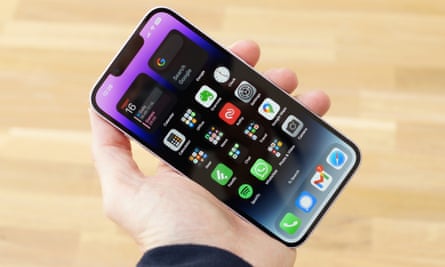
 NEWSLETTER
NEWSLETTER




